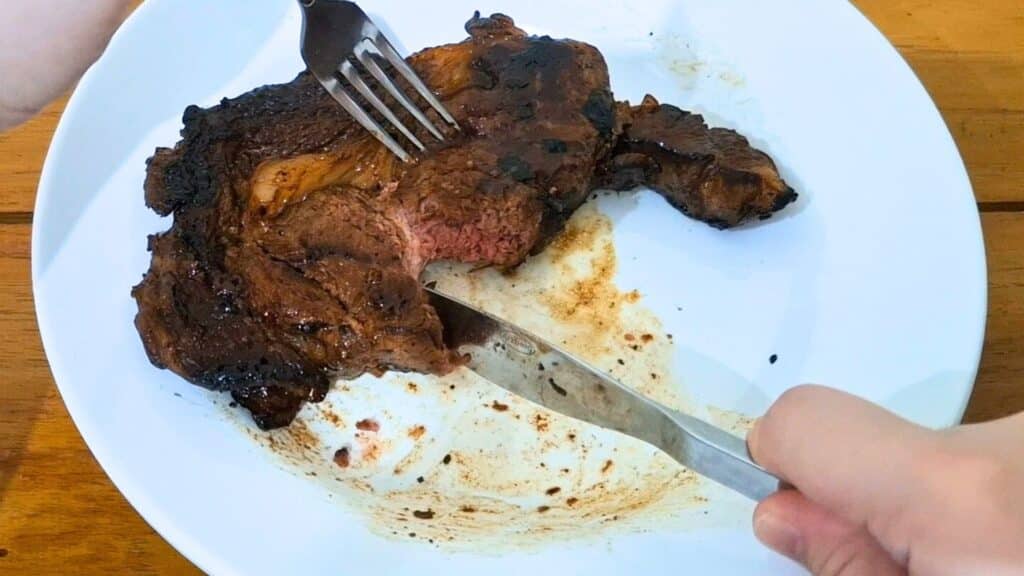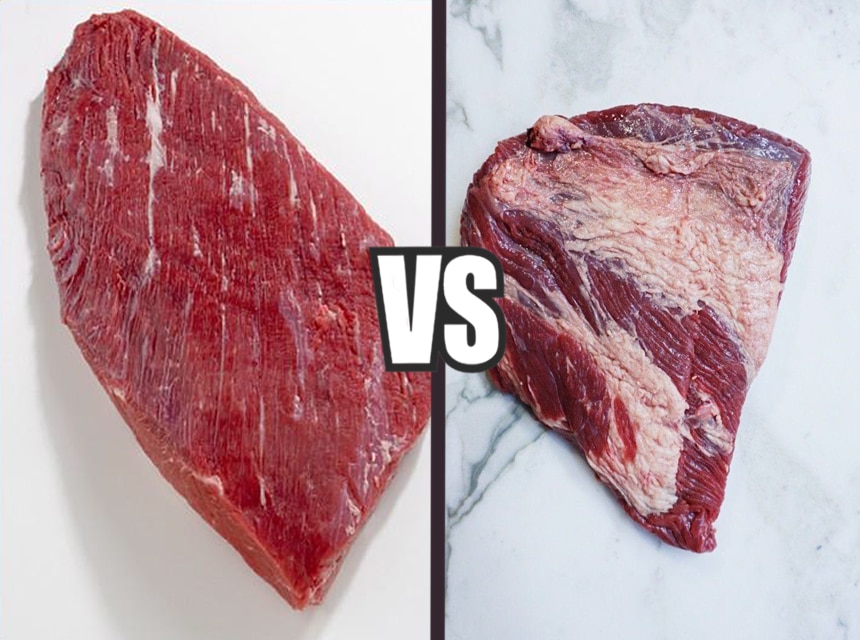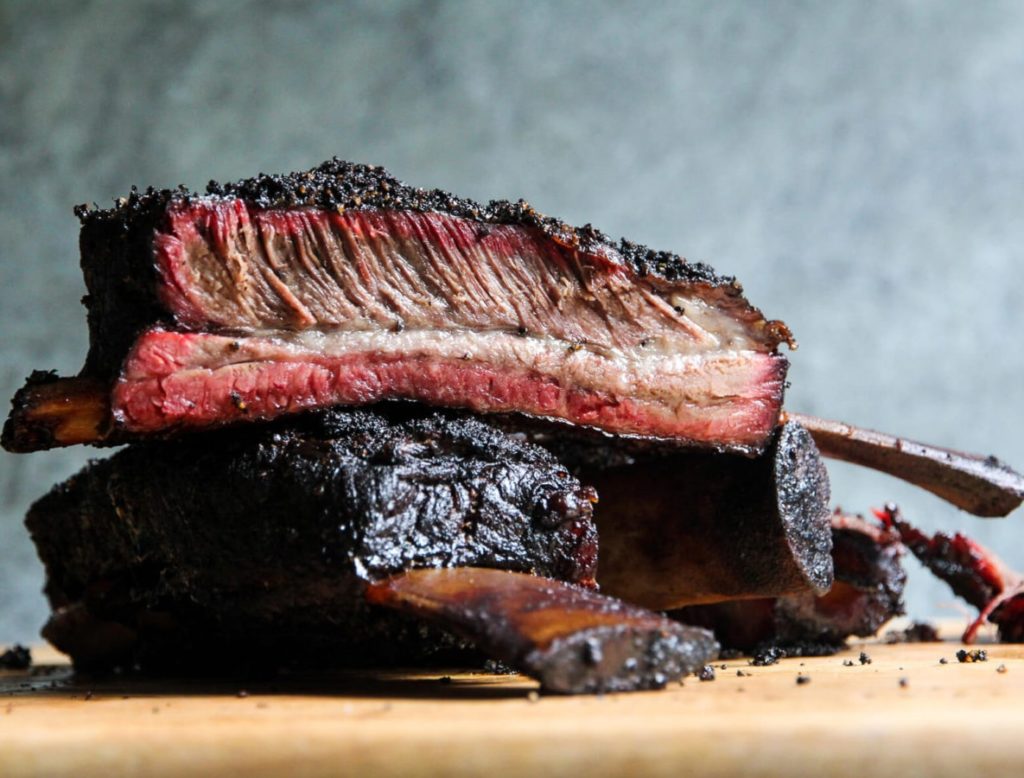

There are so many different cuts of steak, from sirloin to ribeye, to strip to filet. In the world of steaks, no debate is quite as misunderstood as the one of porterhouse vs. t-bone steaks. These cuts are extremely similar yet quite different at the same time. To the untrained eye, they might actually seem like the exact same steak, but that couldn’t be farther from the truth.
If you are someone that has long pondered the difference between a porterhouse and a t-bone steak, don’t worry, you aren’t alone! We intend to use the space below to clear this debate up once and for all. This understanding will allow you to not only plan your dinners better but also use the right recipes for the right cuts of meat. After all, as we said, a porterhouse and t-bone are similar but are also most definitely different, so you need to make sure that you cook them properly to get the most out of these two outstanding cuts of beef.
The quickest way to explain the difference between these two cuts of meat is to examine their size. Though both the porterhouse and t-bone Trusted Source T-bone steak - Wikipedia The T-bone and porterhouse are steaks of beef cut from the short loin (called the sirloin in Commonwealth countries and Ireland). Both steaks include a “T”-shaped lumbar vertebra with sections of abdominal internal oblique muscle on each side. Porterhouse steaks are cut from the rear end of the short loin and thus include more tenderloin steak, along with (on the other side of the bone) a large strip steak. T-bone steaks are cut closer to the front, and contain a smaller section of tenderloin. The smaller portion of a T-bone, when sold alone, is known as a filet mignon (called fillet steak in Commonwealth countries and Ireland), especially if cut from the small forward end of the tenderloin. en.wikipedia.org steaks are cut from a similar location, the loin of the carcass and both have the distinctive t shaped bone in them, and they are still quite different. The biggest difference is their size.
Porterhouse is the larger of the two cuts. In fact, for a steak to be called a porterhouse, it needs to be at least 1.25 inches thick from the edge of the tenderloin to the bone. Anything thinner than this, and it would be a t-bone. T-bones need to be at least 0.25 inches in thickness from the tenderloin cut to the bone. If they are thinner than this, they would only be considered a New York strip steak.
The larger of the two cuts of meat that we are focused on today, the porterhouse is usually the steak that restaurants use in their promotional materials. These steaks can be absolutely massive, making them great for multiple hunger folks.
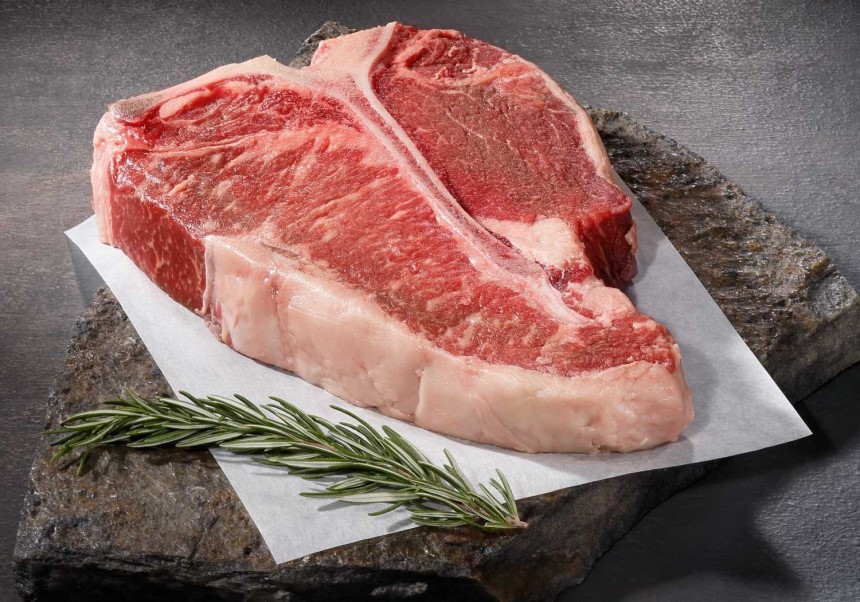
Porterhouse steaks area actually do different cuts of meat combined into one mouthwatering package. The one side of the bone is NY strip steaks. These steaks have a delicious “beefy” flavor. This is thanks in part to the high-fat content. This high level of marbling makes this a chewy and juicy cut of beef.
The other side of the porterhouse equation is the large quantity of tenderloin. Though a t-bone steak will have a bit of tenderloin, a porterhouse is going to have a lot more of it. This cut of meat is where filet mignon is cut from, which is an extremely tender and juicy steak.
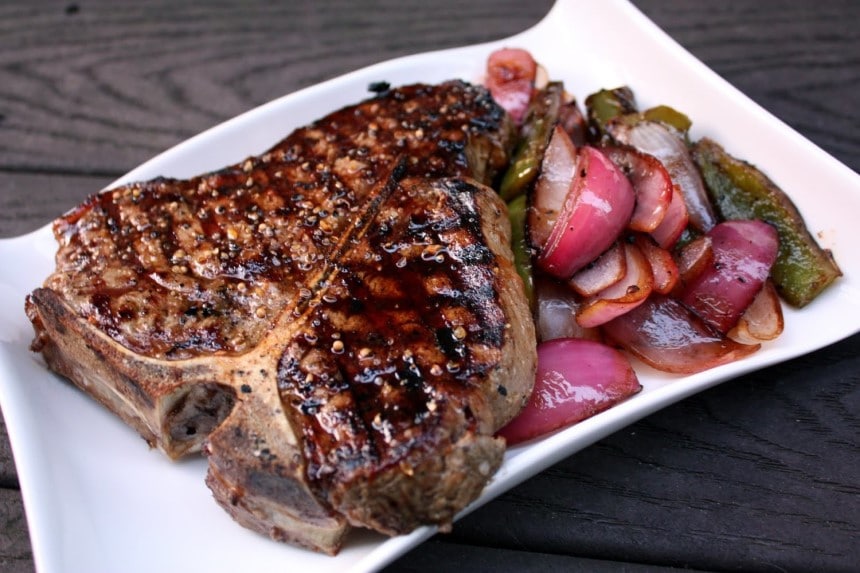
Another strategy for cooking such a large and varied steak is to use a grill. Since you have two cuts of steak, it is best to use two different temperatures. For the tenderloin side, you need to use a lower temperature, while on the NY strip side, you should use a higher heat. That will allow you to cook both steaks at the same time.
The smaller of the two cuts, the t-bone is a great option for anyone looking to save a bit of money but still get a delicious steak.
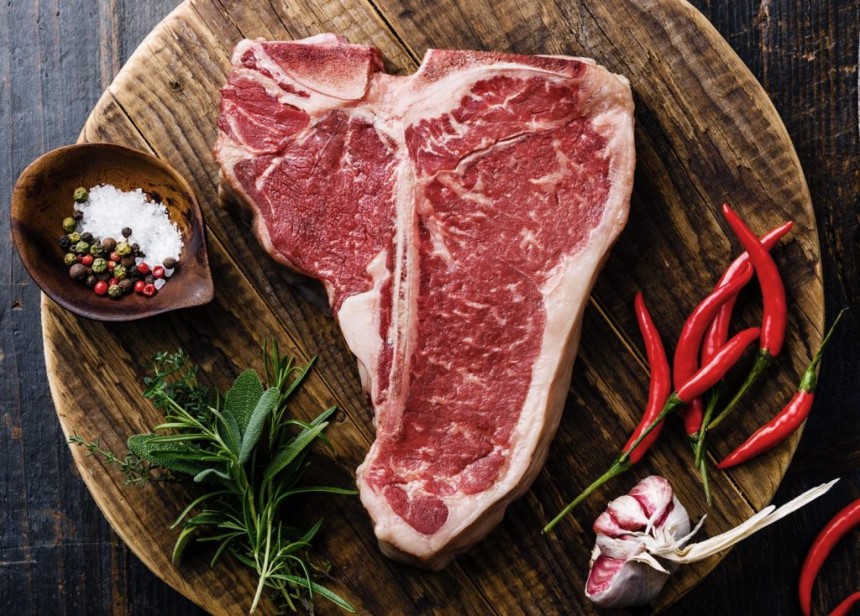
The flavor of a t-bone steak is going to be very similar to a porterhouse. They both have a strip steak section that is delightfully marbled, and they each also have a tenderloin section that is soft and juicy. The big difference, of course, is that you don’t have quite as much as either on a t-bone. The tenderloin is much less pronounced on this cut of meat, which means it tends to be a bit chewier. It is still a delicious steak, thankfully, and perfect if you are just looking to make a meal for one person thanks to its smaller size.
Since t-bone steaks are smaller in size than a porterhouse and a bit thinner as well, you want to make sure that you cook them relatively quickly. A hot skillet or grill will get the job done in this regard. You just need to make sure that you cook each side for 2-3 minutes, and then your steak should be ready to enjoy. This quick-cooking time is a big benefit that a t-bone offers over a porterhouse. Of course, you should check with your meat thermometer so that you are sure they are done to your liking.
 Similarities
SimilaritiesAs we have mentioned before, these are essentially the same cuts of steak, except that the porterhouse is larger and contains more tenderloin than a t-bone steak. They both have a distinctive t shaped bone in the middle of them that separates the two different cuts of meat. One side is a NY Strip steak, while the other is a tenderloin. For both of them, the NY Strip side of the steak is about the same size, while the porterhouse has a larger tenderloin than a t-bone.
Porterhouse steaks are not generally meant to be enjoyed by one person at a time. Thanks to their larger size, these steaks can easily top over 1,000 calories, which is about half the daily allowance in a healthy diet Trusted Source Official website - DGA www.dietaryguidelines.gov . As such, it is much better to cut them up into smaller servings, which should usually be about 6 ounces or so. This would cut the caloric intake to about 250 calories, which is a much healthier intake.
Both the porterhouse and t-bone steaks are high in protein and low in carbs. They usually will have anywhere between 15-25 grams of protein per serving. Porterhouse also has a lot of fat, which can be trimmed before cooking to make them a bit healthier.
Both the porterhouse and t-bone steaks are extremely similar in their makeup, which means that they taste very similar as well. The fat content is about the same on the NY Strip side of the bone, which means the flavor profile is basically identical.
The biggest difference between the two is on the tenderloin side of the equation. Porterhouse steaks have a larger section of tenderloin, which makes this piece a meal in itself, while the tenderloin on a t-bone steak is more of a bonus than an actual meal in itself.
As you would expect, a porterhouse, as a rule, is usually going to be a bit more expensive than a t-bone. This is mostly due to the larger size and the larger portion of tenderloin on a porterhouse. Of course, this depends on a variety of factors, such as the quality of the cuts, the weight of the steaks, and who you buy them from. For instance, you can expect to pay more at a butcher than at your local supermarket, thanks to the quality of the cuts.
While the biggest difference between these two steaks is the width of the tenderloin section, the second biggest difference is the thickness of these same tenderloins. Since t-bones are usually a smaller cut of tenderloin, they tend to be on the thicker side. The same can be true for a porterhouse, but you need to check into this very carefully. Lots of porterhouse steaks have wide tenderloin sections that get very thin towards their edge. You need to inspect your porterhouses carefully before you make your final decision to see if they are worth the extra money.
One of the best things about steak is that there are usually cuts that will fit into any budget. If you are looking for a budget-friendly steak, then your best bet is going to be a local grocery store. While these steaks are not going to be the highest quality in the world, they should still grill up nicely, making for a nice meal.
The next best spot to buy a good porterhouse or t-bone steak is going to be a butcher. If possible, you want to look for a butcher that owns their own herd of beef cattle. That way, you know exactly where the meat is coming from and how well it is cared for. This is a more expensive option, but it will result in the best cuts of meat.
Another, and newer, option is to buy your meats online. This is incredibly convenient since it will allow you to get your t-bone or porterhouse steaks delivered directly to your door.
As you can see, it is completely understandable that folks get confused in the debate of porterhouse vs. t-bone steaks. Both of these cuts are from the same area of the cow, and both of them have a t shaped bone inside of them. The biggest difference between the two, and what will allow you to tell them apart, is the size of the tenderloin section of the steak.
Porterhouse has a larger tenderloin than t-bone. To be qualified as a true porterhouse, the width of the tenderloin needs to be at least 1.25 inches across. Anything smaller down to half an inch in width is a t-bone. No matter which steak you decide to buy, you are guaranteed to have a delicious meal.
